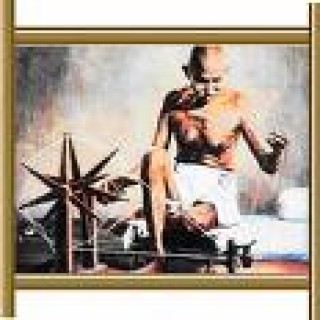
When the Union Jack was pulled down at Madikeri Fort
FREEDOM STRUGGLE IN KODAGU
(By: C.P. Belliappa)
British East India Company annexed the kingdom of Kodagu in 1834 after dethroning the last Raja Veerarajendra. A revolt against British rule erupted in Kodagu in the year 1837. This uprising is considered by many as one of the earliest fights against foreign rule.
With the establishment of educational institutions, and the introduction of coffee cultivation, the British improved the economy of Kodagu; and the common man lived in relative peace. For 75 years since their takeover in 1834, the British ruled Kodagu without any resistance from the local populace. It was in the year 1909 that an organization named Jamindars Society was started by Rao Bahadur Codanda Madaiah and Biddanda Ganapathy, to recommend to the British Government on issues relevant to the people of Kodagu. In the year 1912 this Society was reorganized as Jamindars Sangha. Membership of this Sangha swelled, and its presence was felt in every village in Kodagu. Jamindars Sangha became a powerful voice of the people.
In 1921, a need was felt to start a newspaper in Kodagu. Most of the prominent members of Jamindars Sangha joined hands to start the Kodagu newspaper. With Pandiyanda Belliappa as the first editor, this publication soon became very popular; and gave substantial boost in increasing awareness in people towards their rights.
Jamindars Sangha laid the foundation for the establishment of National Congress Party in Kodagu. About 35 members from Kodagu participated in the Congress Session presided over by Mahatma Gandhi at Belgaum in 1924. Inspired by this meeting it was decided to start a chapter of the Congress Party in Kodagu. On 4th January 1925, Kodagu Zilla Congress Committee was formed with Paruvangada Kushalappa as the President. C.N. Venkappaiah was named the Honorary Secretary, and M.M. Siddique the Treasurer. The party started with 15 members. In February 1925, a Khadi Bhandar was opened in Virajpet. People enthusiastically took-up spinning cotton with charakas supplied by the Congress Party. The trio of the Jamindars Sangha, the Kodagu newspaper, and the Congress Party took the message of self-rule to every corner in Kodagu.
In March 1929 ‘Swaraj Day’ was observed all over India. People in Kodagu whole-heartedly took part in this movement. For the first time, a public meeting was organized in Gonicoppal, to spread the call for Swaraj given by Mahatma Gandhi. At this public meeting C.N. Venkappaiah, Manepanda Chinnappa, Kollimada Carumbaiah and Machimanda Muthanna spoke. Many senior leaders from Karnataka Congress such as Allur Venkata Rao, Ranganath Diwakar, Kamaladevi Chattopadya et al stated visiting Kodagu to train and motivate local leaders. Besides, litterateurs: Da Ra Bendre, K.V. Puttappa, Masti Venkatesh Iyengar, D.V. Gundappa also made frequent trips to Kodagu to enthuse the people in fighting for freedom.
In Ponnampet, a large open area was named Kushalpura in memory of Paruvangada Kushalappa who suddenly died in 1928, at the age of 38, while on his way back from Calcutta where he was one of the delegates from Kodagu at the Congress Session. Every last Sunday of the month, Indian national flag was hoisted at Kushalpura. Ajjikuttira Chinnappa and Mallegada Chengappa were the first to hoist the national flag at this venue on 26th May 1929. People started wearing Khadi. Ills of alcohol consumption were made aware. Many protested against sale of alcohol. Bajjans, Harikathas were organized in villages to spread Indian culture and heritage. Well-known exponent of Harikatha – Belur Keshavdas – visited Kodagu, and his rendering of stories from the epics enthralled the people and induced patriotism. The British government was rattled by these activities. For the first time, section 144 was imposed in Kodagu, and Keshavdas was prevented from holding his Harikathas. Mahatma Gandhi’s Dandi march, and Salt satyagraha were actively supported by the people of Kodagu. The struggle for freedom took deeper roots in Kodagu.
In 1930, under the leadership of Pandiyanda Belliappa, the government was given an ultimatum to close liquor shops in Kodagu. When this was not heeded, on 10th June 1930 large number of activists picketed peacefully in front of liquor shops at Ponnampet. Soon similar picketing started in other towns and villages. Liquor sales dropped affecting revenue for the government.
Around this time, women in Kodagu decided to enter the freedom struggle, and support their male counterparts. Kotera Accavva was the first woman to take this plunge. Many women followed. Picketing against liquor consumption became highly effective with women taking part in the movement. On 30th May 1930 an impressive rally by the women was held in Madikeri which included two of the well-known Poovaiah sisters – Chitra and Latha. The sisters gave up their education and became satyagrahis. It was during this time that a young 18 year old Kavery, daughter of Kolera Cariappa, asked permission from her father to take part in the proposed picketing at Hudikeri on 15th September 1930. She was heart-broken when her father refused. Kavery, filled with intense patriotism could not bear the disappointment. The following day Kavery took the extreme step of taking her own life by jumping in the lake nearby.
Protest rallies against liquor sales, and rejection of imported goods, intensified. The Swadeshi movement received wide support from the citizens. On 20th September 1930 satyagrahis were arrested for the first time in Kodagu. Those who courted arrest included Pandiyanda Belliappa, Kollimada Carumbaiah, H.R. Krishnaiah, and Abdul Gaffoor Khan. In addition, the newspaper Kodagu was brought under press ordinance, because of which publication had to be stopped till a caution deposit of Rs. 1000 was paid to the government. All these measures spurred the citizens to protest against British rule with more vigour.
Some of young satyagrahis took more proactive steps to register their determination to end foreign rule. On 17th December 1930 three brave young men: Mallegada Chengappa, B.G. Ganapaiah and Mandepanda Cariappa walked into Madikeri fort and boldly removed the Union Jack, and in its place hoisted the Indian National flag. They happily courted arrest for their patriotic act.
The British government started arresting and imprisoning satyagrahis in the hope that they would curb the freedom movement. To their dismay the movement gained more support. More and more young men and women joined the struggle in response to call by Mahatma Gandhi. Amongst those who discontinued their studies and joined the freedom movement was my father, then twenty-year-old Chepudira Poonacha from Gonicoppal.
On 7th January 1932, the government imposed section 144 all over Kodagu; and holding of any rallies was banned for a month. Defying this ban, on 10th January 1932, a huge public meeting was held at Gonicoppal. Pandiyand Belliappa and Ajjikuttira Chinnappa addressed the satyagrahis. Many leaders were arrested, and had to serve sentences ranging from 6 to 9 months in Kannur prison. On 27th January 1932, women satyagrahis: Pandiyanda Seetha Belliappa, Baliyatanda Muddavva and Mukkatira Bojamma were arrested for distributing pamphlets to the public. Notices were issued to many leaders including Pandiyanda Belliappa, Kollimada Carumbaiah, Iynanda Cariappa, Ajjikuttira Chinnappa, Chepudira Poonacha, Abdul Gaffoor Khan et al banning them from picketing or making public speeches.
Around this time, in response to Mahatma Gandhijis call, steps were taken to end discriminations against Harijans. People were made aware of this social ill. Harijans were allowed to enter temples and partake in meals along with the satyagrahis. On 21st October 1932 a massive rally was organized in Gonicoppal. Many leaders including Ajjikuttira Chinnappa were arrested again, and prison sentences with fines were imposed. Those who failed to pay the fine had to face the action of their livestocks being confiscated.
Again, on 25th October 1932, satyagrahis replaced the British flag with the Indian National flag at Madikeri fort. After this incident, armed guards were permanently stationed near the flag-post.
During this period, Chepudira Poonacha was given the task of composing, cyclostyling and distribution of a publication named ‘Veerabharati’. He did this successfully from Gonicoppal, and the authorities were unable to locate the origin of the publication. Extensive searches were made to locate the cyclostyling machine. When the machine was finally discovered, Chepudira Poonacha was sentenced to 9 months rigorous imprisonment at Kannur jail. This was his second of the three stints in prison where he came in contact with many national leaders.
In 1934, Pandiyanda Belliappa, Kollimada Carumbaiah, Chepudira Poonacha and other leaders requested Mahatma Gandhi to visit Kodagu. Gandhiji toured Kodagu from 21st to 23rd February, and was impressed by the intensity of freedom struggle in this picturesque hilly region. He, however, wanted the local people to do more for the uplift of the Harijans. This visit of Mahatma to Kodagu gave a huge fillip to the satyagraha movement. Many women voluntarily came forward and donated their jewellery to the Mahatma. More people started wearing Khadi and observed the Swadeshi philosophy. Age-old discriminations against Harijans started to wane. Harijans and Girijans too began to take part in the freedom movement, and many of them courted arrest and prison terms.
With the Second World War breaking out in 1939, there was a lull in the satyagraha movement all over the nation. Gandhiji, however, continued the call for independence on the foundation of non-violence. His ‘ahimsa’ philosophy was spontaneously accepted by the satyagrahis in Kodagu. Satyagraha Samithis were founded all over Kodagu. On 11th May 1940 the first Satyagraha training center was started in Virajpet. Pandiyanda Belliappa, his wife Seetha, Kollimada Carumbaiah, Mallengada Chengappa, Kakamada Nanaiah, Chepudira Poonacha and many other leaders took the pledge to continue satyagraha peacefully, and practice ahimsa.
In August 1942, Mahatma Gandhi made the historic call: ‘Quit India’. This had an electrifying effect on the entire nation. Many leaders in Kodagu such as Pandiyanda Belliappa, Kolera Karumbaiah, Chekkera Monnaiah, Kollimada Carumbaiah, Ajjikuttira Chinnappa, Kakamada Nanaiah were arrested. Chepudira Poonacha who had gone to Bombay to take part in the All India Congress Committee meeting, was arrested on 14th August 1942. A number of students took active part in the Quit India movement. Prominent student leaders were: Ajjikuttira Appanna, Paruvangada Uthappa, Malachira Muthanna, Codanda Devaiah and Karthamada Subbaiah.
The long struggle for gaining freedom was finally realized on 15th August 1947. Houses were decorated all over Kodagu and lamps were lit to usher-in freedom at midnight. Students took processions in Madikeri and other towns. Senior leaders: Pandiyanda Belliappa and Kollimada Carumbaiah addressed the celebrating crowds. Chepudira Poonacha was in the Central Hall of the Parliament in Delhi where Jawaharlal Nehru made his historic speech. Also present at the venue was the then Brigadier K.M. Cariappa, who would take over as the first Indian Commander-in-Chief of the Armed Forces.
A community hall is under construction in Gonicoppal in honour of all those who made sacrifices in securing freedom that we enjoy today.
(Most of the details in this article are from Mr. B.D.Ganapathy’s book published in 1965)

